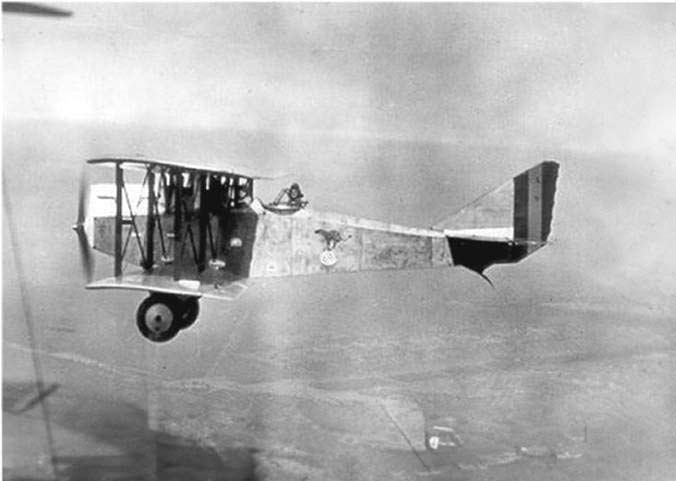Ansaldo A.300: Italian WWI-era biplane, designed for reconnaissance and light bombing with dual pilot/trainer capabilities. The Ansaldo A.300 reflects an era where aviation was in its nascent stages, serving as a multifunctional aircraft for Italy during and after World War I. Initially conceived as a reconnaissance aircraft, it also took on training and light bombing roles. Its development and deployment underline the diverse demands placed on military aircraft during the early 20th century.
The period surrounding World War I witnessed an unprecedented acceleration in aircraft development, driven by the exigencies of combat and the evolving nature of aerial warfare. Italy, like other nations, was in pursuit of enhancing its aerial capabilities. Within this context, the Ansaldo A.300 emerged as a versatile aircraft aimed at fulfilling a variety of roles from reconnaissance to training.
History of the Development of the Ansaldo A.300:
The Ansaldo A.300 was an Italian biplane designed during World War I, primarily for reconnaissance missions. The Ansaldo company, an Italian industrial giant, ventured into aircraft manufacturing during the war, leveraging its vast resources and engineering expertise. Recognizing the need for an adaptable aircraft that could perform multiple functions on the battlefield, Ansaldo began the development of what would become the A.300.
The project was spearheaded by engineers Giuseppe Brezzi and Ettore Savoia. They sought to create an aircraft that was easy to produce, fly, and maintain, given the constraints imposed by wartime conditions. The A.300 program was launched amidst the tumult of the war, with the first prototype taking flight in 1917. As the NATO naming convention did not exist at the time, the A.300 did not receive such a designation.
The aircraft was a response to the critical need for effective reconnaissance, which had become apparent during the early stages of the war. The ability to gather intelligence on enemy positions and movements was of paramount importance, and aircraft like the A.300 were at the forefront of this mission.
Design of the Ansaldo A.300:
The Ansaldo A.300 was designed with simplicity and functionality in mind. It featured a conventional biplane structure with staggered wings to provide good visibility for the crew. The fuselage was constructed mainly of wood with a fabric covering, typical of the period. Its open cockpit accommodated two crew members: a pilot and an observer, who doubled as a rear gunner.
With a wingspan of 38 feet 10.5 inches (11.85 meters) and a length of 27 feet 6.7 inches (8.40 meters), the A.300’s design was compact and robust. It was powered by a variety of engines throughout its production, the most common being the SPA 6A inline engine, which produced around 220 horsepower (164 kW). The choice of powerplant could vary, which sometimes led to disparities in performance among different A.300 aircraft.
The advantages of the A.300 included its relative ease of construction and maintenance, as well as its stability and forgiving flight characteristics, which made it an ideal platform for pilot training. However, its traditional design also came with limitations. The biplane configuration and fabric-covered construction limited its speed and durability, especially when compared to the metal monoplanes that would soon dominate the skies.

Performance of the Ansaldo A.300:
Performance-wise, the Ansaldo A.300 was not built for speed; it could reach a top speed of around 110 mph (177 km/h), with a cruising speed of approximately 93 mph (150 km/h). It had a service ceiling of about 18,000 feet (5,486 meters) and a range of 373 miles (600 kilometers). These specifications made it suitable for reconnaissance missions of the era, where endurance and stability were more critical than speed.
When compared with its contemporaries such as the French Breguet 14 or the British Bristol F.2 Fighter, the A.300 was not as advanced in speed or armament but offered reliability and ease of operation. These attributes were highly valued for training purposes and during the war when rapid production and pilot readiness were of the essence.
Military Use and Combat of the Ansaldo A.300:
The Ansaldo A.300 saw service primarily with the Italian military. It was armed modestly with one or two machine guns and had the capacity to carry a small payload of bombs. This armament allowed it to perform light bombing missions in addition to its primary reconnaissance role.
The A.300 participated in the latter stages of World War I, contributing to the Italian war effort by providing vital reconnaissance data and serving as a light bomber when necessary. Post-war, its role shifted significantly toward training, where its stability and ease of handling were highly prized. The A.300 did not see extensive combat service post-WWI and was gradually phased out as more advanced aircraft designs emerged. It was replaced by aircraft such as the Fiat CR.30 as the Italian Air Force modernized in the interwar period.
The Ansaldo A.300 represents a key transitional aircraft for Italy during a period marked by both the climax and the aftermath of World War I. Its versatility in serving multiple roles made it a valuable asset to the Italian military. Though outpaced by technological advances in the years following its introduction, the A.300’s contributions to training and reconnaissance missions during a formative era in military aviation remain noteworthy.
Back to the Bombers section.